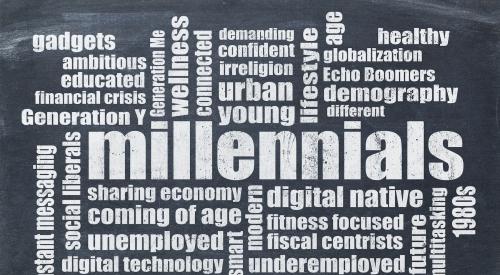Millennials and their grandparents may seem like they have nothing in common, but the data says otherwise, according to the National Association of Realtors. In the association’s 2020 Home Buyers and Sellers Generational Trends report, the younger Millennials are following the trends of their grandparents as they move toward suburbs and small towns. Though many do not have children yet, they’re purchasing affordable houses and settling down. One data point their grandparents might be upset about, however, is that the younger Millennial homebuyers have the highest share of unmarried couples—you can already hear the “tsk, tsk.” Find out more about this crucial demographic.
Despite stereotypes that millennials all flock to city centers while spending all of their disposable income on avocado toast and rent in luxurious buildings, data from the 2020 Home Buyers and Sellers Generational Trends report shows us that this generational group mirrors home buying tendencies of their grandparents, the silent generation. Younger millennials, buyers aged 22 to 29 years, made up 13% of all homebuyers in 2019, surpassing the silent generation as a buying group, and 3% of sellers. This generation was born between 1990 and 1998, and had a median age of 27 years. Given the younger age of this generational cohort, younger millennials had the highest share of unmarried couples at 21%. Sixty-seven percent of younger millennials had no children living at home and only 7% purchased multi-generational homes.
Younger millennials had the second-lowest median household incomes at $80,000 (only above the silent generation), and 86% were first-time buyers. Fifty-five percent of younger millennials rented an apartment or house before purchasing their home. As is expected with younger homebuyers more than other generations, 33% lived at home before purchasing – 20% with parents or friends without paying rent, and 13% at home while paying rent. In comparison, only 13% of older millennials (those aged 30 to 39) lived at home previously. Younger millennials primarily purchased for the desire to own a home of their own (60%).













